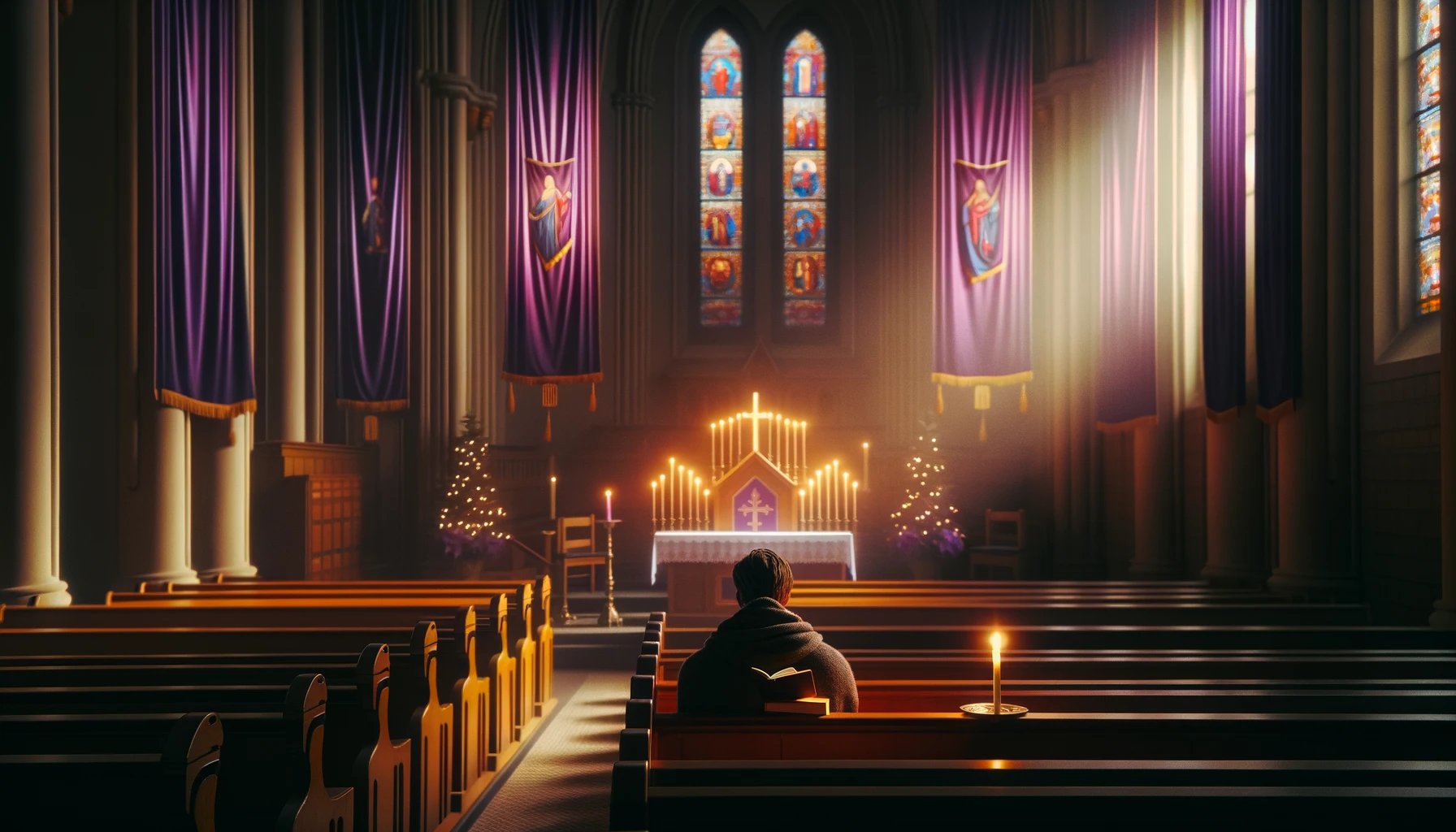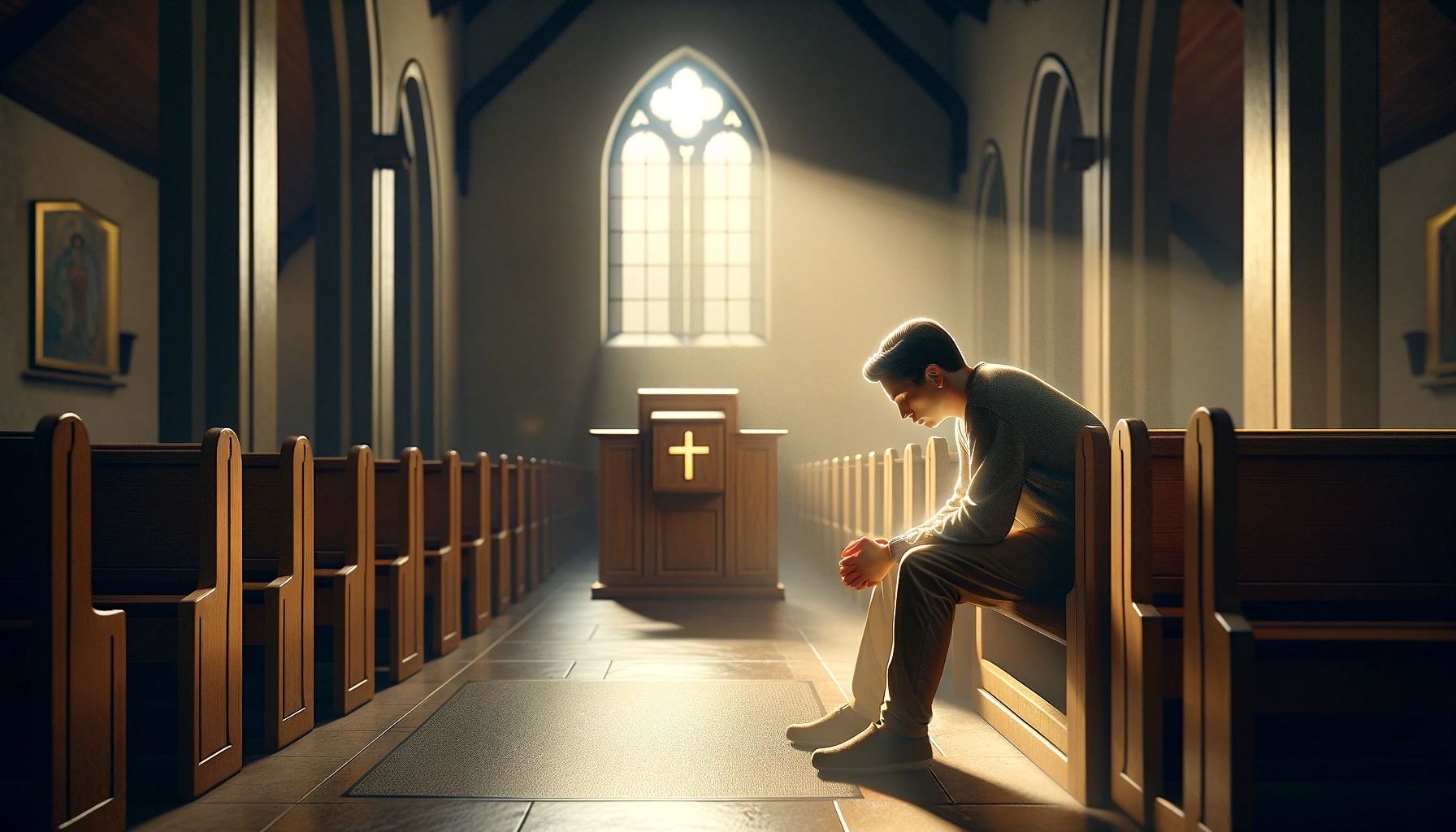Home>Special Themes>Why Do We Light Candles On Advent


Special Themes
Why Do We Light Candles On Advent
Published: February 12, 2024
Jason DeRose, Managing Editor at Christian.net, uses his expertise in religion and journalism to deepen understanding of faith's societal impacts. His editorial leadership, coupled with a strong academic background, enriches the platform’s diverse content, earning him recognition in both journalism and religious circles.
Discover the significance of lighting candles on Advent and the special themes associated with this cherished tradition. Learn why it holds such importance in the Christian faith.
(Many of the links in this article redirect to a specific reviewed product. Your purchase of these products through affiliate links helps to generate commission for Christian.net, at no extra cost. Learn more)
Table of Contents
Introduction
Advent, a time of anticipation and preparation for the celebration of the birth of Jesus Christ, is a significant period in the Christian calendar. It marks the beginning of the liturgical year and is observed with various traditions and rituals. One of the most visually striking customs associated with Advent is the lighting of candles. This ancient practice holds deep symbolic and spiritual significance, serving as a poignant reminder of the hope and light brought into the world through the birth of Jesus.
The act of lighting candles during Advent is a cherished tradition that has been passed down through generations, fostering a sense of unity and reverence among believers. As the soft glow of the candles illuminates the darkness, it serves as a powerful metaphor for the spiritual journey of faith and the enduring hope that sustains individuals through challenging times. In this article, we will delve into the rich history, symbolism, and spiritual significance of lighting candles on Advent, shedding light on the profound meaning behind this timeless tradition.
Read more: Why Do We Celebrate Advent?
The History of Advent
The history of Advent traces back to the early centuries of Christianity, with its origins rooted in the practices of the Western Church. The word "Advent" is derived from the Latin word "adventus," meaning "coming" or "arrival." This season, which typically spans the four Sundays leading up to Christmas, serves as a period of spiritual preparation and joyful expectation for the birth of Jesus Christ.
The exact emergence of Advent as a distinct liturgical season is not precisely documented, but its observance can be traced to the early medieval period. It was during this time that the Church began to formalize the Advent season as a time of penitence and reflection, akin to the solemnity of Lent. The focus of Advent extended beyond the anticipation of Christ's birth to encompass the anticipation of His second coming, emphasizing the dual nature of the season as a time of both joyful celebration and introspection.
Over the centuries, the observance of Advent evolved, with various traditions and customs taking shape across different Christian denominations. The liturgical color associated with Advent, purple or blue, symbolizes penitence, preparation, and royalty, underscoring the dual themes of repentance and anticipation. The Advent wreath, adorned with candles, became a prominent symbol of the season, with each candle representing a different aspect of the spiritual journey toward the birth of Christ.
The historical significance of Advent is deeply intertwined with the rich tapestry of Christian traditions and the enduring legacy of faith passed down through generations. As the season continues to be observed worldwide, its historical roots serve as a poignant reminder of the enduring relevance of ancient practices in contemporary faith communities.
In summary, the history of Advent is a testament to the enduring legacy of faith and the timeless significance of preparing for the coming of Christ. This historical backdrop provides a profound context for understanding the deep spiritual resonance of the Advent season and the enduring relevance of its traditions in the modern era.
The Symbolism of Candles
The use of candles during Advent holds profound symbolic significance, encapsulating the essence of hope, faith, and spiritual illumination. Each aspect of the candle, from its form to its flame, serves as a powerful metaphor for the spiritual journey of believers during the Advent season.
-
Light: The flickering flame of the candle represents the light of Christ, illuminating the darkness and dispelling despair. As each candle is lit during the progression of Advent, it symbolizes the increasing radiance of Christ's presence in the world and in the hearts of believers. The gradual illumination of the Advent wreath mirrors the anticipation and growing hope associated with the imminent arrival of the Savior.
-
Hope: The act of lighting a candle embodies the concept of hope, signifying the anticipation of the fulfillment of God's promises. The symbolism of hope is particularly poignant during Advent, as it encapsulates the yearning for the arrival of the Messiah and the promise of redemption and salvation. The candles serve as tangible reminders of the hope that sustains believers through the trials and tribulations of life.
-
Unity: The communal act of lighting candles fosters a sense of unity and fellowship among worshippers, symbolizing the collective journey of faith during the Advent season. As each individual candle is kindled from the flame of the preceding one, it underscores the interconnectedness of believers and the shared anticipation of Christ's coming. This act of unity reinforces the communal aspect of faith and the shared hope that unites believers across generations and cultures.
-
Anticipation: The progressive lighting of candles on the Advent wreath reflects the gradual anticipation of the birth of Jesus, marking the passage of time and the approach of the joyous celebration of Christmas. Each candle, representing a week of Advent, serves as a tangible marker of the journey toward the culmination of the season, evoking a sense of eager expectation and spiritual preparation.
In essence, the symbolism of candles during Advent encapsulates the core themes of the season, serving as a visual representation of hope, light, unity, and anticipation. The act of lighting candles transcends mere ritualistic practice, offering a profound expression of faith and a tangible reminder of the enduring significance of the Advent season in the hearts of believers.
The Tradition of Lighting Candles on Advent
The tradition of lighting candles on Advent is a time-honored practice that holds deep spiritual significance and serves as a poignant symbol of the anticipation and preparation for the birth of Jesus Christ. At the heart of this tradition is the Advent wreath, a circular arrangement of evergreen foliage adorned with four candles, typically three purple or blue candles and one rose or pink candle. The wreath itself symbolizes the eternal nature of God and the everlasting life found in Christ, while the candles represent the progressive illumination of the world through the coming of Jesus, the light of the world.
The lighting of the Advent candles occurs on each of the four Sundays leading up to Christmas, with each candle carrying its own distinct symbolism. The first candle, known as the Prophet's Candle or the Candle of Hope, signifies the anticipation of the Messiah and the hope that He brings to the world. The second candle, often referred to as the Bethlehem Candle or the Candle of Preparation, represents the preparation and readiness for the arrival of Christ. The third candle, the Shepherd's Candle or the Candle of Joy, symbolizes the joy brought by the Good News of Christ's imminent birth. Finally, the fourth candle, the Angel's Candle or the Candle of Love, embodies the love and compassion embodied in the message of Christ's coming.
The lighting of the candles is typically accompanied by readings from the Bible, prayers, and hymns, creating a reverent and contemplative atmosphere. As each candle is lit, it serves as a visual representation of the spiritual journey toward the celebration of Christmas, marking the passage of time and the deepening sense of anticipation and joy. The act of kindling the candles fosters a sense of unity and shared purpose among worshippers, as they collectively participate in this timeless ritual that transcends cultural and denominational boundaries.
The tradition of lighting candles on Advent is a cherished custom that resonates deeply with believers, offering a tangible and evocative expression of faith and hope. As the soft glow of the candles illuminates the darkness, it serves as a powerful reminder of the enduring light and promise brought into the world through the birth of Jesus. This tradition continues to be a source of inspiration and spiritual reflection, inviting individuals to pause and contemplate the profound significance of the Advent season and the timeless message of hope, joy, and love it embodies.
The Spiritual Significance of Candle Lighting
The act of lighting candles during Advent holds profound spiritual significance, transcending mere symbolism to encapsulate the essence of faith, hope, and divine illumination. As each candle is kindled, it serves as a tangible representation of the spiritual journey of believers during the Advent season, evoking a sense of reverence and contemplation.
At its core, the spiritual significance of candle lighting during Advent is rooted in the timeless message of hope and anticipation. The flickering flame of each candle symbolizes the enduring light of Christ, piercing through the darkness of despair and offering a beacon of hope to all who behold it. This symbolism resonates deeply with believers, serving as a poignant reminder of the promise of redemption and the abiding presence of God in the midst of life's challenges.
Furthermore, the act of lighting candles fosters a sense of unity and communal faith, as worshippers collectively participate in this sacred ritual. The shared experience of kindling the candles underscores the interconnectedness of believers and the shared journey of anticipation and preparation for the celebration of Christ's birth. This communal act of faith reinforces the bonds of fellowship and underscores the universal nature of hope and light that transcends cultural and denominational boundaries.
Moreover, the progressive lighting of the candles on the Advent wreath mirrors the gradual unfolding of the spiritual journey toward Christmas. Each candle, representing a week of Advent, serves as a tangible marker of the passage of time and the deepening sense of anticipation and joy. This ritualistic progression underscores the transformative nature of the Advent season, inviting believers to reflect on the spiritual significance of each stage of the journey and the profound implications of Christ's imminent arrival.
In essence, the spiritual significance of candle lighting during Advent extends far beyond the visual spectacle of flickering flames. It serves as a powerful embodiment of faith, hope, and unity, offering believers a tangible expression of the timeless truths encapsulated in the Advent season. As the candles cast their gentle glow, they illuminate the hearts and minds of worshippers, inviting them to embrace the profound spiritual significance of the season and the enduring message of hope, joy, and love it embodies.
Read more: How To Light The Advent Candles
Conclusion
In conclusion, the tradition of lighting candles on Advent is a timeless and deeply meaningful practice that encapsulates the essence of faith, hope, and spiritual illumination. From its rich historical roots to its profound symbolism and spiritual significance, the act of kindling candles during the Advent season serves as a poignant reminder of the enduring message of hope, joy, and love brought into the world through the birth of Jesus Christ.
The history of Advent, with its origins dating back to the early centuries of Christianity, underscores the enduring legacy of faith and the timeless significance of preparing for the coming of Christ. This historical backdrop provides a profound context for understanding the deep spiritual resonance of the Advent season and the enduring relevance of its traditions in the modern era.
The symbolism of candles during Advent, with each aspect of the candle representing light, hope, unity, and anticipation, serves as a visual representation of the core themes of the season. The act of lighting candles transcends mere ritualistic practice, offering a profound expression of faith and a tangible reminder of the enduring significance of the Advent season in the hearts of believers.
The tradition of lighting candles on Advent, centered around the Advent wreath and the progressive illumination of the candles, fosters a sense of unity and shared purpose among worshippers. This timeless ritual transcends cultural and denominational boundaries, inviting individuals to participate in a collective journey of anticipation and preparation for the celebration of Christmas.
The spiritual significance of candle lighting during Advent, rooted in the timeless message of hope, faith, and divine illumination, offers believers a tangible expression of the enduring light of Christ. As the candles cast their gentle glow, they illuminate the hearts and minds of worshippers, inviting them to embrace the profound spiritual significance of the season and the enduring message of hope, joy, and love it embodies.
In essence, the tradition of lighting candles on Advent serves as a poignant reminder of the enduring light and promise brought into the world through the birth of Jesus. This ancient practice continues to be a source of inspiration and spiritual reflection, inviting individuals to pause and contemplate the profound significance of the Advent season and the timeless message of hope, joy, and love it embodies.














